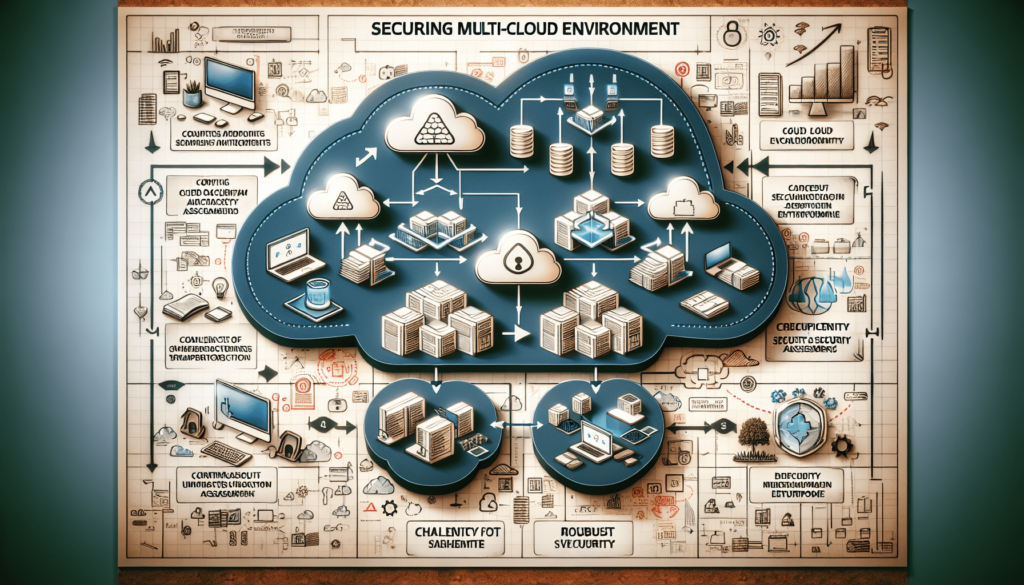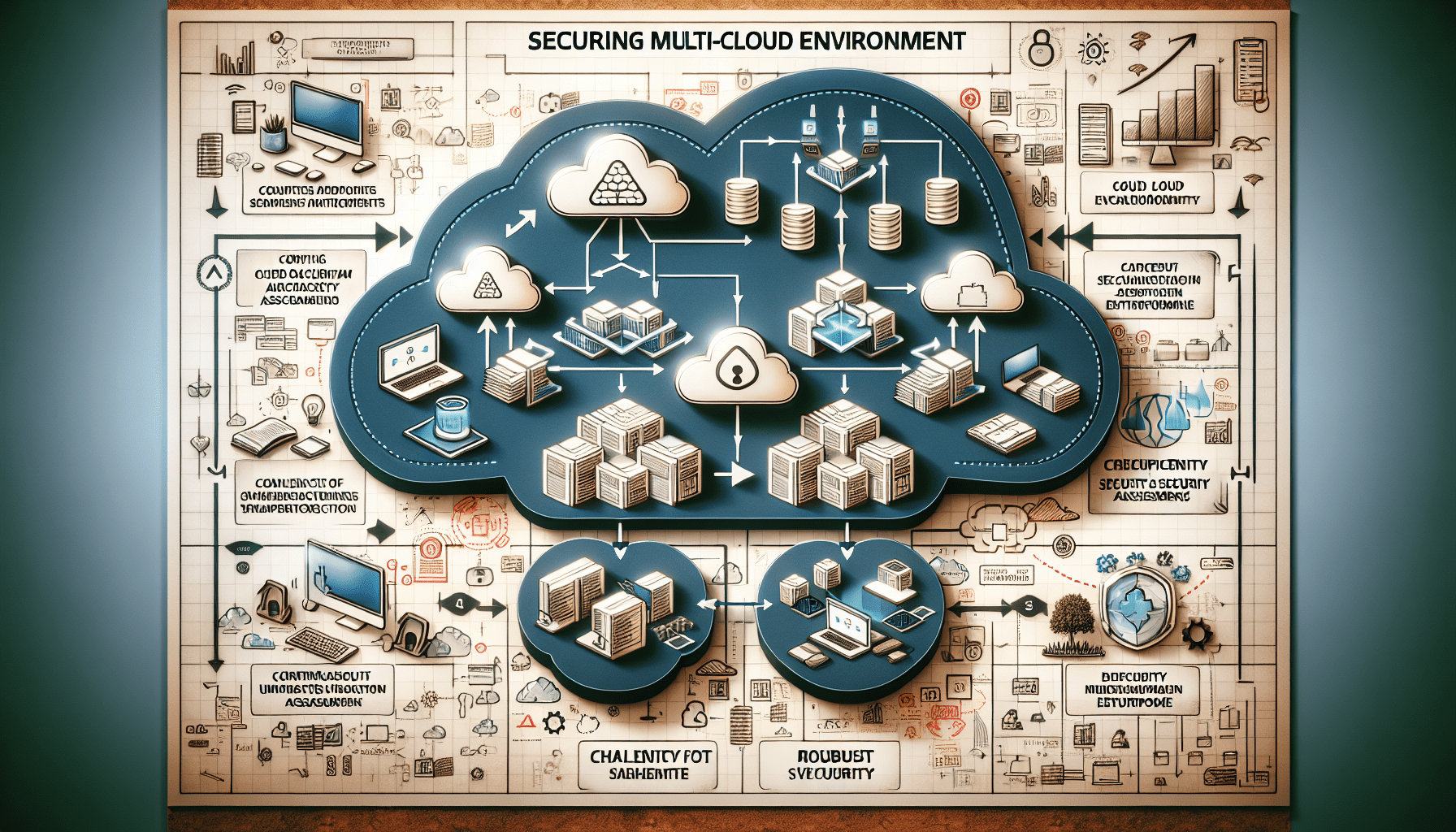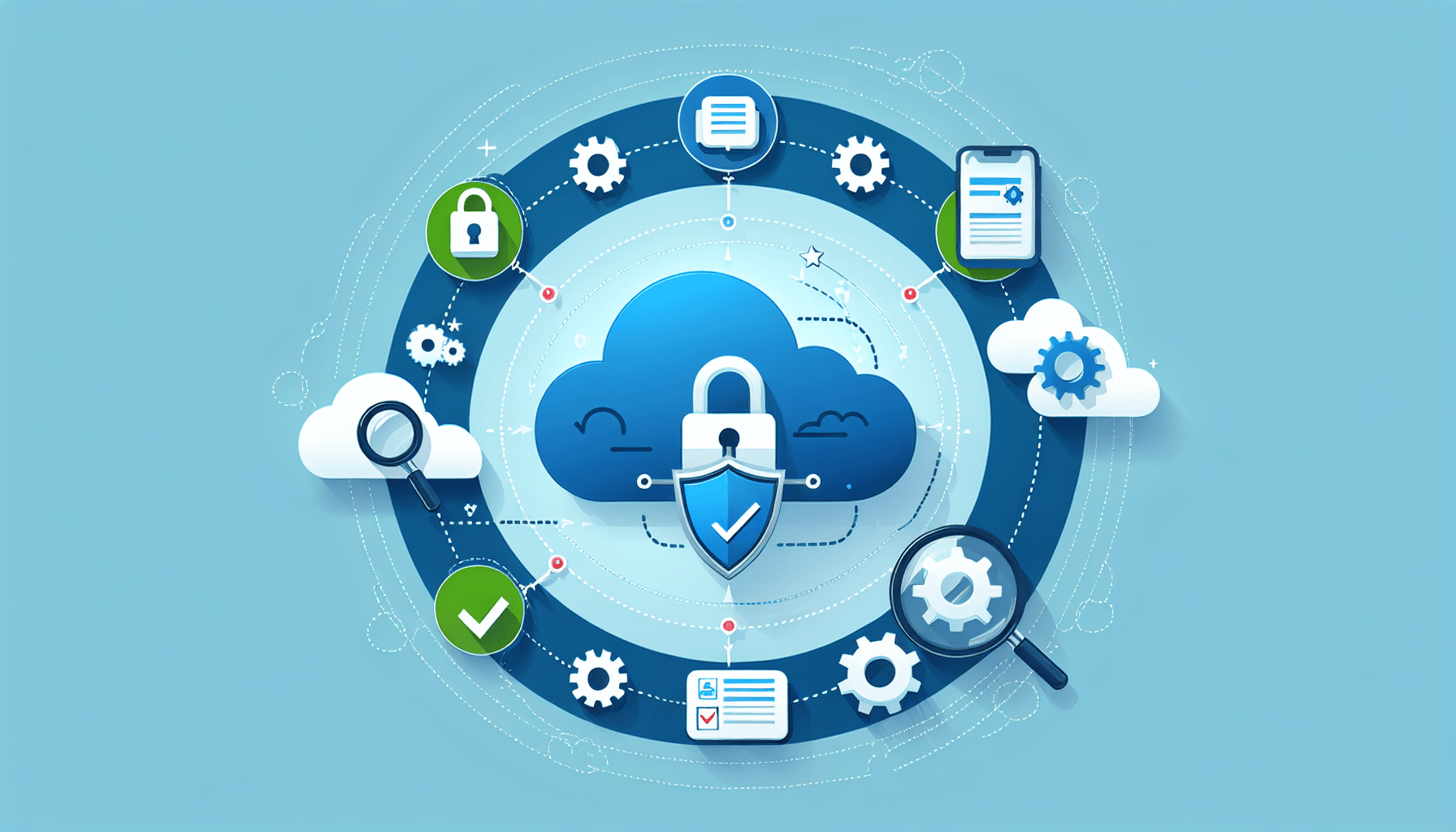In the rapidly evolving landscape of cloud computing, ensuring the security of your data and applications is of paramount importance. With an increasing number of organizations adopting multi-cloud environments, where data is stored and processed across multiple cloud platforms, it becomes crucial to implement effective security measures. This article explores the best practices for conducting cloud security assessments in multi-cloud environments, providing you with insights on how to protect your valuable assets and mitigate potential risks.
Understanding Multi-Cloud Environments
Multi-cloud environments refer to the use of multiple cloud services from different providers to meet an organization’s computing needs. Rather than relying on a single cloud provider, organizations opt for multi-cloud environments to leverage the unique capabilities and strengths of different platforms. This approach allows businesses to avoid vendor lock-in, increase flexibility, and enhance performance.
Definition of Multi-Cloud Environments
Multi-cloud environments are characterized by the strategic use of multiple cloud services, such as infrastructure-as-a-service (IaaS), platform-as-a-service (PaaS), and software-as-a-service (SaaS), offered by different providers. Organizations adopt multi-cloud strategies to avoid dependency on a single provider and to benefit from a diverse range of services encompassing storage, computing power, networking, and more.
Benefits of Multi-Cloud Environments
Multi-cloud environments offer several benefits to organizations, including:
-
Reduced Dependency: By leveraging multiple cloud providers, organizations can avoid being locked into a single vendor. This reduces the risk of service disruptions and allows greater flexibility in choosing the most suitable services for specific requirements.
-
Enhanced Performance: Different cloud providers have varying strengths in terms of performance, geographic presence, and scalability. By utilizing multiple providers, organizations can optimize their workload distribution and ensure optimal performance for their applications.
-
Cost Optimization: Multi-cloud environments enable organizations to select the most cost-effective services for their needs. By comparing prices, organizations can achieve significant cost savings while maintaining high service quality.
-
Improved Resilience: By distributing workloads across different cloud providers, organizations can enhance their resilience and minimize the impact of potential outages. This reduces the risk of downtime and ensures business continuity.
Challenges of Multi-Cloud Environments
While multi-cloud environments offer numerous benefits, they also pose challenges that organizations must address. These challenges include:
-
Complexity: Managing multiple cloud providers can be complex, as it requires expertise in various platforms, service-level agreements (SLAs), and integration challenges. Organizations must invest in skilled resources and robust management processes to overcome this complexity.
-
Data Integration: Data integration across multiple clouds can be challenging, as each provider may use different data formats, APIs, and protocols. Organizations must implement effective data integration strategies to ensure seamless connectivity and data flow between different cloud environments.
-
Security and Compliance: With data spread across multiple clouds, ensuring security and compliance becomes a critical challenge. Organizations must implement robust security measures and compliance frameworks to protect sensitive data and meet regulatory requirements across all cloud environments.

Importance of Cloud Security Assessments
Cloud security assessments play a crucial role in ensuring the confidentiality, integrity, and availability of data and applications hosted in multi-cloud environments. These assessments provide organizations with a comprehensive understanding of their security posture, identify vulnerabilities and threats, and enable the implementation of necessary controls to protect sensitive information.
Identifying Vulnerabilities and Threats
Cloud security assessments help identify vulnerabilities and threats that may exist in multi-cloud environments. By conducting thorough assessments, organizations can proactively identify weaknesses in their infrastructure, applications, and processes. This allows them to address these vulnerabilities promptly, reducing the risk of potential security breaches.
Ensuring Compliance with Regulations
Multi-cloud environments often require organizations to comply with various industry-specific and regional regulations. Cloud security assessments help ensure that organizations meet these compliance requirements across all their cloud environments. By assessing their security controls and alignment with regulatory frameworks, organizations can avoid penalties, reputational damage, and legal repercussions.
Protecting Sensitive Data
Data breaches can lead to severe financial and reputational damage for organizations operating in multi-cloud environments. Cloud security assessments help identify data protection gaps, such as inadequate access controls or vulnerable encryption mechanisms. By addressing these gaps, organizations can protect sensitive data from unauthorized access, ensuring its confidentiality and integrity.

Key Considerations for Cloud Security Assessments in Multi-Cloud Environments
When conducting cloud security assessments in multi-cloud environments, organizations must consider several key factors to ensure comprehensive coverage and effective risk mitigation.
Defining Security Requirements
Organizations must clearly define their security requirements based on industry regulations, compliance standards, and their specific risk appetite. This involves identifying the types of data to be protected, specifying access controls, encryption requirements, and ensuring alignment with relevant security frameworks.
Choosing the Right Assessment Tools
Selecting the appropriate assessment tools is crucial for conducting effective cloud security assessments. These tools should be capable of scanning and assessing the security posture of various cloud providers and identifying vulnerabilities across different layers, including network, infrastructure, and applications.
Assessing the Physical Security of Cloud Providers
While most cloud security assessments focus on technical aspects, evaluating the physical security controls implemented by cloud providers is equally important. Assessing factors such as data center security, physical access controls, and incident response protocols helps ensure that cloud providers have robust physical security measures in place.
Evaluating Network Security Measures
Multi-cloud environments rely on secure networking to interconnect different cloud services. Organizations must assess the network security measures implemented by cloud providers, such as network segmentation, firewall configurations, and intrusion detection systems. Evaluating these measures helps ensure the integrity and confidentiality of data transmitted across cloud environments.
Best Practices for Cloud Security Assessments
To maximize the effectiveness of cloud security assessments in multi-cloud environments, organizations should follow these best practices:
Implementing Identity and Access Management (IAM)
Implementing robust IAM practices ensures that only authorized users can access cloud resources and data. This involves defining user roles, enforcing strong authentication mechanisms, and implementing least privilege principles to minimize the risk of unauthorized access.
Ensuring Data Encryption
Data encryption is crucial for protecting sensitive information in multi-cloud environments. Organizations should encrypt data both at rest and in transit, utilizing strong encryption algorithms and secure key management practices. Encryption helps prevent data breaches and safeguards information from unauthorized access.
Regularly Monitoring and Auditing Cloud Environments
Continuous monitoring and auditing of cloud environments allow organizations to detect and respond to security incidents promptly. By implementing monitoring tools and establishing comprehensive logging and auditing practices, organizations can identify suspicious activities, perform forensic analysis, and ensure compliance with security policies and regulations.
Conducting Penetration Testing
Penetration testing helps identify vulnerabilities in cloud environments by simulating real-world attacks. By conducting regular penetration tests, organizations can proactively identify security weaknesses, validate their security controls, and implement necessary remediation measures. This helps ensure the resilience and robustness of their multi-cloud environments.
Establishing Incident Response Plans
Having well-defined incident response plans is crucial for effective cloud security management. Organizations should establish clear procedures for detecting, responding to, and recovering from security incidents in multi-cloud environments. Incident response plans should include predefined roles and responsibilities, communication protocols, and steps for system recovery and vulnerability patching.
Compliance and Regulatory Considerations
Ensuring compliance with industry-specific regulations and regional data protection laws is a critical aspect of cloud security assessments in multi-cloud environments.
Understanding Compliance Standards
Organizations must thoroughly understand the compliance standards relevant to their industry. This includes regulations such as the General Data Protection Regulation (GDPR), Payment Card Industry Data Security Standard (PCI DSS), and Health Insurance Portability and Accountability Act (HIPAA). By understanding these standards, organizations can align their security controls with the specific requirements of each regulation.
Evaluating Cloud Providers’ Compliance
When selecting cloud providers for multi-cloud environments, organizations should evaluate their compliance with relevant regulations and industry standards. This involves reviewing certifications, audit reports, and contractual commitments to ensure their alignment with organizational compliance requirements.
Addressing Legal and Regulatory Requirements
Organizations must ensure that their cloud security assessments cover all legal and regulatory requirements specific to their industry and region. This includes data residency, cross-border data transfers, data breach notification obligations, and other legal considerations. Addressing these requirements helps protect organizations from legal and financial consequences associated with non-compliance.
Mitigating Risks in Multi-Cloud Environments
To mitigate risks in multi-cloud environments effectively, organizations should adopt a comprehensive risk management approach and establish robust governance frameworks.
Implementing a Comprehensive Risk Management Framework
A comprehensive risk management framework helps organizations identify, assess, and prioritize risks associated with multi-cloud environments. This involves conducting regular risk assessments, implementing appropriate controls, and continuously monitoring and updating risk mitigation measures.
Establishing a Strong Cloud Governance Framework
Cloud governance frameworks provide organizations with a structured approach to managing multi-cloud environments. This includes defining roles and responsibilities, establishing policies and procedures, and enforcing compliance with security standards and best practices. A strong governance framework ensures consistent and effective security across all cloud environments.
Implementing Strong Authentication Mechanisms
Ensuring the use of strong authentication mechanisms is crucial in multi-cloud environments. Organizations should adopt multi-factor authentication, enforce strong password policies, and utilize technologies such as biometrics or hardware tokens to enhance authentication security. This helps prevent unauthorized access and protects sensitive data.
Continuous Monitoring of Cloud Environments
Continuous monitoring of multi-cloud environments is essential for detecting and responding to security incidents promptly. Organizations should deploy security monitoring tools that provide real-time visibility into cloud resources, network traffic, and user activities. Proactive monitoring helps identify potential threats and vulnerabilities, allowing organizations to take immediate action to mitigate risks.
Integration with Existing Security Infrastructure
Integrating cloud security with existing security infrastructure is essential to ensure consistent security controls and seamless collaboration between cloud and on-premises environments.
Ensuring Compatibility with Existing Security Technologies
Organizations should assess the compatibility of new cloud security solutions with their existing security technologies, such as firewall systems, intrusion detection/prevention systems (IDS/IPS), and security information and event management (SIEM) platforms. Compatibility ensures effective coordination and visibility across all security layers.
Integrating Cloud Security with Enterprise Security Operations
To streamline security operations, organizations should integrate cloud security tools and processes with their enterprise security operations centers (SOCs). This allows for centralized security incident management, correlation with threat intelligence feeds, and more efficient detection and response capabilities.
Establishing a Centralized Security Management System
A centralized security management system offers a unified view of security controls, policies, and incidents across multiple cloud environments. This helps organizations effectively manage their multi-cloud security posture, standardize security practices, and gain better control and visibility over their overall security landscape.
Training and Awareness for Key Stakeholders
Ensuring that key stakeholders are adequately trained and aware of cloud security best practices is essential to maintain a strong security posture in multi-cloud environments.
Educating Employees on Cloud Security Best Practices
Employees play a critical role in maintaining cloud security. Organizations should provide regular training programs to educate employees about best practices, such as strong password management, phishing awareness, and data protection. Employee education reduces the risk of human errors and improves overall security awareness.
Creating Security Awareness Programs
Organizations should establish dedicated security awareness programs to foster a culture of security among employees. These programs can include interactive training sessions, security quizzes, and regular communication about emerging threats and security updates. By promoting security awareness, organizations can empower employees to become active participants in maintaining a secure multi-cloud environment.
Training IT Staff on Cloud Security Implementation
IT staff responsible for managing and securing multi-cloud environments should receive specialized training on cloud security concepts, technologies, and implementation best practices. This training enables them to effectively configure and monitor security controls, respond to security incidents, and ensure compliance with security policies and standards.
Third-Party Risk Management
Engaging with third-party vendors introduces additional security risks in multi-cloud environments. Effective third-party risk management helps organizations maintain control and oversight of their security posture.
Assessing the Security Posture of Third-Party Vendors
Before engaging third-party vendors, organizations should assess their security posture. This involves evaluating their security policies, frameworks, and practices to ensure they meet the organization’s security requirements. Regular assessments and audits should be conducted to monitor ongoing compliance.
Establishing Security Guidelines for Third-Party Interactions
Clear security guidelines should be established for interactions with third-party vendors. These guidelines should outline expectations for data protection, access controls, incident response, and other security-related aspects. Organizations must collaborate closely with vendors to ensure seamless integration and adherence to security guidelines.
Implementing Vendor Risk Management Processes
Vendor risk management processes should be put in place to identify, assess, and mitigate risks associated with third-party vendors. These processes include due diligence assessments, contractual agreements, periodic security audits, and ongoing monitoring to ensure continuous compliance with security requirements.
Future Trends in Cloud Security Assessments
As technology evolves and the threat landscape continues to evolve, cloud security assessments will incorporate emerging trends to enhance security measures.
Emerging Technologies in Cloud Security
Cloud security assessments will incorporate emerging technologies such as artificial intelligence (AI) and machine learning (ML) to analyze vast amounts of data, identify patterns, and detect anomalies. These technologies will enable more advanced threat detection and response capabilities in multi-cloud environments.
Automation and Artificial Intelligence in Assessments
Automation and AI will play a crucial role in cloud security assessments. By automating routine security tasks such as vulnerability scans and log analysis, organizations can improve the efficiency of assessments and focus their resources on critical security issues. AI-powered tools can also provide real-time threat intelligence and enable proactive threat hunting.
Regulatory Changes and their Impact on Assessments
Regulatory changes will continue to reshape cloud security assessments. Organizations must stay updated with the evolving regulatory landscape to ensure compliance with new requirements. Assessments will need to adapt to these changes and include additional controls and tests to address emerging regulatory challenges.
In conclusion, cloud security assessments play a vital role in ensuring the security and compliance of multi-cloud environments. By understanding the definition, benefits, and challenges of multi-cloud environments, organizations can implement key considerations and best practices to mitigate risks effectively. By integrating cloud security with existing infrastructure, training key stakeholders, managing third-party risks, and embracing emerging trends, organizations can strengthen their security posture and adapt to the evolving cloud landscape.



